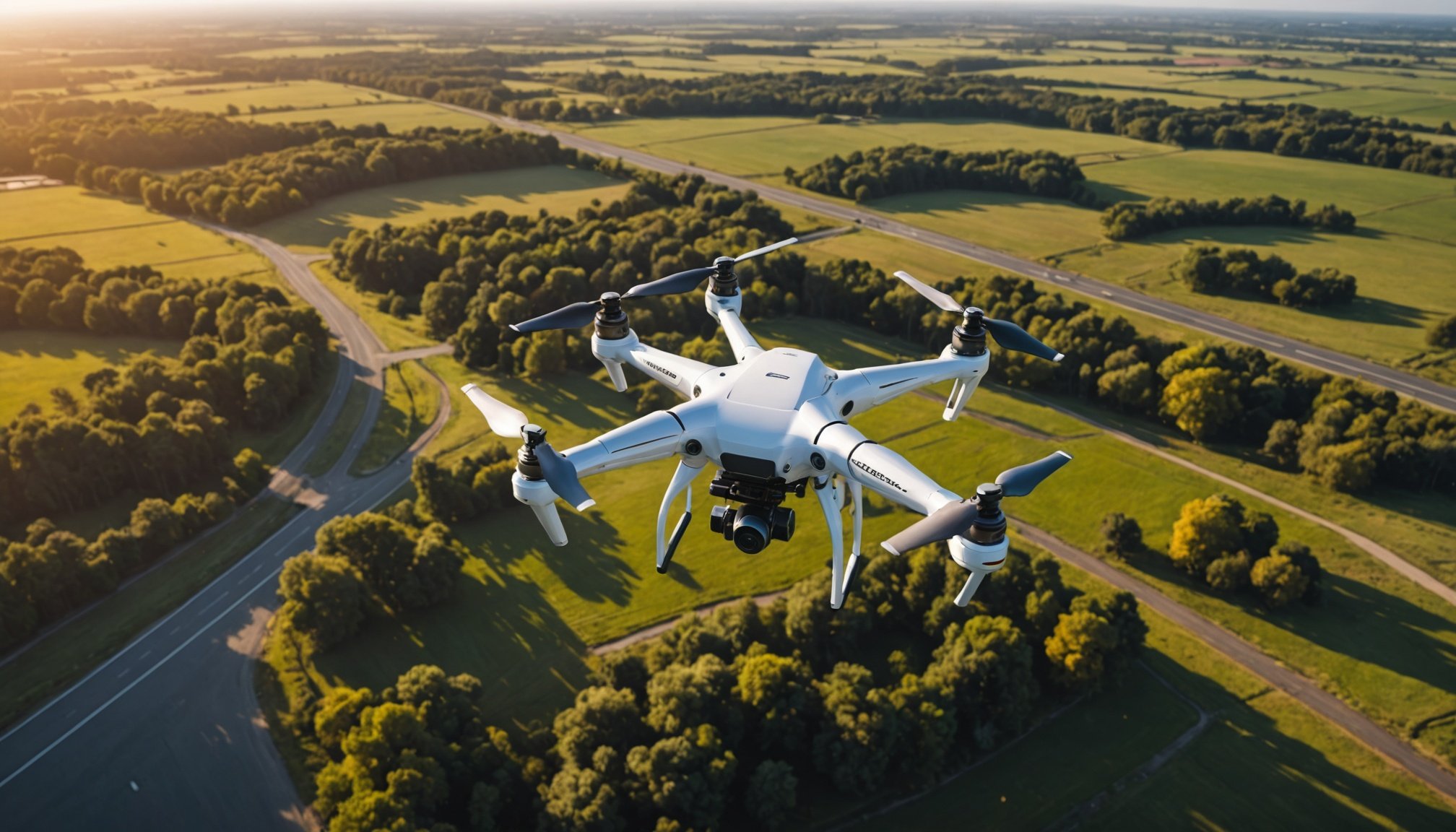Introduction to AI in Drone Navigation
AI integration plays a critical role in enhancing drone navigation systems. It enables autonomous drones to tackle complex navigation challenges, especially in diverse urban and rural environments. The integration of AI allows drones to process large amounts of data efficiently, making real-time decisions that are essential for safe and precise navigation.
One of the significant advancements is the development of AI algorithms tailored to handle intricate navigation tasks. These algorithms empower drones to understand and interpret their surroundings, making autonomous decision-making possible. AI’s role in drone navigation extends to managing dynamic environmental factors, ensuring that drones can adjust their paths when unexpected obstacles are detected.
Have you seen this : What role does blockchain play in UK tech advancements?
In urban environments, the complexity increases with buildings, varying traffic conditions, and the presence of numerous wireless signals. AI aids in distinguishing important signals from noise, enhancing the drone’s ability to navigate without constant human intervention. Meanwhile, in rural areas, AI helps manage challenges like inconsistent GPS signals and diverse terrain features.
In summary, AI continues to revolutionize the way drone navigation systems operate, providing solutions that make autonomous flight more reliable and efficient.
Additional reading : Selecting plm software to optimize your business efficiency
Machine Learning Algorithms
In the realm of drone navigation systems, machine learning plays a pivotal role, offering a range of AI algorithms essential for enhancing drone operations. These algorithms empower drones to undertake complex tasks like predictive analytics, crucial for anticipating environmental changes. Types such as supervised, unsupervised, and reinforcement learning are commonly adopted. Supervised learning, for instance, helps drones to recognize and classify objects in their surroundings based on pre-learned data sets.
Consider a case study highlighting the use of reinforcement learning in autonomous drone missions, where drones navigate unpredictable terrains. Here, machine learning aids in the adaptation to new patterns, showcasing its flexibility. However, selecting the right algorithm is not without challenges, as drones operating in different environments may require different algorithmic strengths.
Deciding on the appropriate algorithm depends significantly on the mission’s objectives and environmental conditions. This decision is paramount to ensure accurate and efficient navigation. Understanding these nuances aids in establishing robust drone navigation systems, minimizing operational errors. Thus, recognizing which machine learning model aligns best with specific navigation needs is crucial for developing proficient and autonomous drones.
Sensor Integration
Incorporating sensor technology is vital in advancing the capabilities of autonomous drones. These technologies provide essential data, enabling drones to navigate accurately and efficiently. Various types of navigation sensors—including LiDAR, cameras, and radar—allow drones to perceive their environment with precision. LiDAR systems excel in mapping terrains, offering high-resolution data that is crucial for detailed analysis and navigation.
The concept of data fusion is key to merging information from different sensors, ensuring more reliable and robust navigation solutions. By integrating multiple sensor inputs, drones can reconcile discrepancies between data sources, resulting in a cohesive understanding of their surroundings. This data fusion is instrumental in tackling challenges posed by complex environments, enhancing decision-making accuracy.
To optimize drone performance, best practices in sensor integration focus on careful calibration and synchronization. Ensuring that sensors function harmoniously involves precise alignment and frequent testing. Moreover, leveraging advanced software algorithms aids in managing sensory input effectively, converting raw data into actionable insights. By adhering to these practices, drones can achieve superior operational efficiency, marking a significant leap in autonomous navigation systems.
Data Processing Techniques
Data processing is a cornerstone for enhancing the operation of drone navigation systems. As drones collect vast amounts of information during flights, it becomes essential to manage this data effectively for real-time use. Real-time analytics enables drones to process and analyse information on the go, allowing for instance, immediate obstacle avoidance or course corrections.
One pivotal development in this field is edge computing. By bringing data processing closer to the source, drones can achieve faster data handling and improved computational efficiency. This approach reduces the delay in communication with remote servers, ensuring that autonomous drones function with minimal lag, an essential feature for maintaining safety in dynamic environments.
To accommodate the enormous data volumes generated, drones employ robust data management solutions. Strategies include compressing data without losing critical information and implementing efficient data transmission protocols which optimise resource usage. By streamlining data processing, drones can maintain optimal performance levels, even when navigating complex terrains or environments. This requires an ongoing effort in refining algorithms and upgrading hardware capabilities to ensure that drones can handle tasks efficiently and reliably.
Real-Time Decision-Making
Rapid real-time processing is paramount for drones to navigate safely in unpredictable environments. The ability to make immediate and precise decisions is facilitated by sophisticated decision-making algorithms, crucial for altering courses and avoiding obstacles while in flight. This capability significantly enhances drones’ reliability and efficiency.
Advanced algorithms enable drones to assess their surroundings continually and adjust their navigation strategies swiftly. These algorithms are designed to interpret vast amounts of data in milliseconds, providing the agility needed for optimal performance. Response time is a critical factor, as delays can lead to potential hazards or collisions.
Successful examples of real-time decision-making can be observed in autonomous drone missions where drones must adapt to fast-changing conditions like turbulent weather or moving objects. Here, technology allows drones to learn from past experiences, enabling immediate adjustments.
In practice, integrating robust real-time strategies ensures that autonomous drones can handle complex and dynamic scenarios effectively. These innovations not only improve safety but also expand the operational possibilities for drones across diverse applications, from delivery services to search-and-rescue missions.



